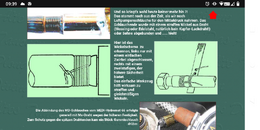bradlw
Contributor
random trivia question.
For things like securing a mouthpiece, what did they (or you for you old timers older than this old timer) use before those nylon zipties were a thing?
A little google search tells me that those things were invented in 1958. Eight years before I was born. So yeah, maybe they've pretty much always been used for SCUBA applications
but
As far as I can remember, though they weren't really a thing when I was a kid, and even when i was a teen I feel like they would have been a specialty item, not generally available or used in retail applications.
So
Was there ever a time when mouthpieces were sucured with something else?
For things like securing a mouthpiece, what did they (or you for you old timers older than this old timer) use before those nylon zipties were a thing?
A little google search tells me that those things were invented in 1958. Eight years before I was born. So yeah, maybe they've pretty much always been used for SCUBA applications
but
As far as I can remember, though they weren't really a thing when I was a kid, and even when i was a teen I feel like they would have been a specialty item, not generally available or used in retail applications.
So
Was there ever a time when mouthpieces were sucured with something else?




